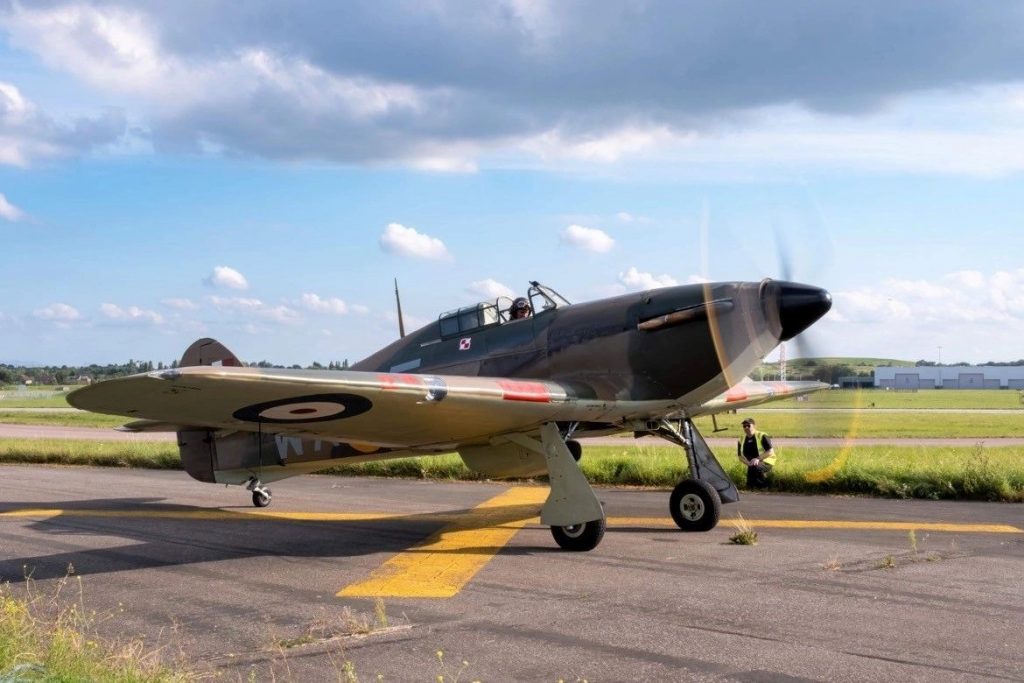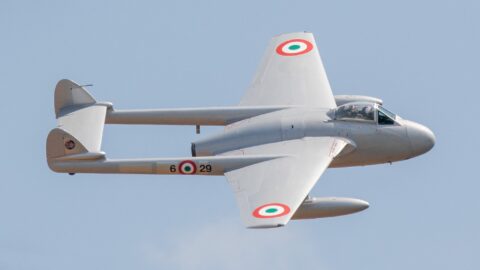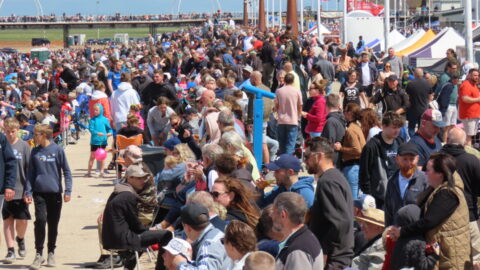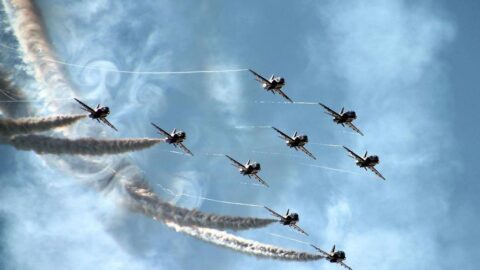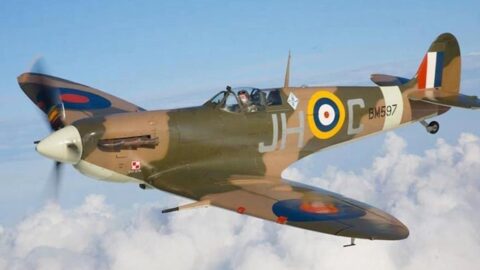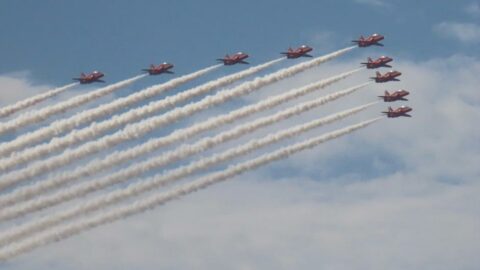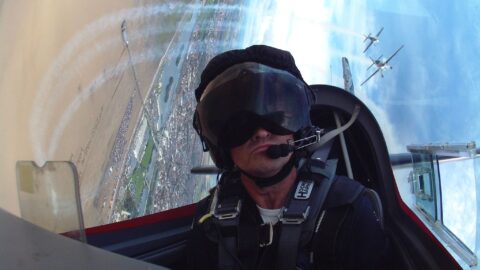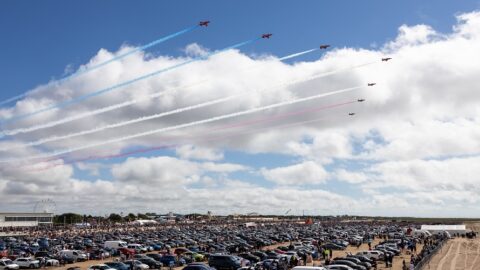Polish RAF heroes who flew to defend Britain during World War Two will be celebrated with flying displays by Hurricane G-HURI at this weekend’s Southport Air Show.
The aircraft, which flies as The Polish Heritage Flight, will pay special tribute to two heroic pilots who flew with the RAF during the conflict.
Southport Air Show, organised by Sefton Council’s Tourism team, takes place this Saturday and Sunday (9th and 10th September 2023).
You can book Southport Air Show tickets here. Under 16s go free.
The event boasts an impressive line-up including the RAF Red Arrows, the Typhoon, the Chinook, the Battle of Britain Memorial Flight, the Tigers Army Parachute Display Team and more.
Hurricane Mk XIIa 5711 (G-HURI) was rebuilt in the 1980s from the best original Hurricane parts sourced, in the previous 10 years, from all over Canada. It was given the identity of aircraft CCF c/n 72036 as that aircraft was the source of the airframe used in the rebuild.
RCAF 5711 had been built in 1942 by the Canadian Car Foundry as part of their sixth production batch and joined the Royal Canadian Air Force in 1943. It is believed to have served with 123 Squadron at Debert before going to 127 and 129 Squadrons at Dartmouth and onto 1 Operational Training Unit at Bagotville.
It made its first post-restoration flight in 1989 painted in RAF markings as Z3781 coded XR-T of No 71 Eagle Sqdn. Historic Aircraft Collection acquired the Hurricane in 2002 and after undergoing an 18 month extensive programme of repairs and maintenance the Hurricane reappeared in an entirely new paint scheme for 2004, Z5140 coded HA-C of No 126 Sqdn the paint scheme that was worn by a Gloster-built Hurricane IIB, flown with 126 Squadron during the siege of Malta.
Today Hawker Hurricane G-HURI wears 302 Squadron Markings for the 2023 Season with the markings of Flt Lt Tadeusz Chlopik (P2954 WX-E) on the Starboard side and Wing Commander Julian Kowalski (P3935 WX-D) on the Port side and flies as The Polish Heritage Flight.
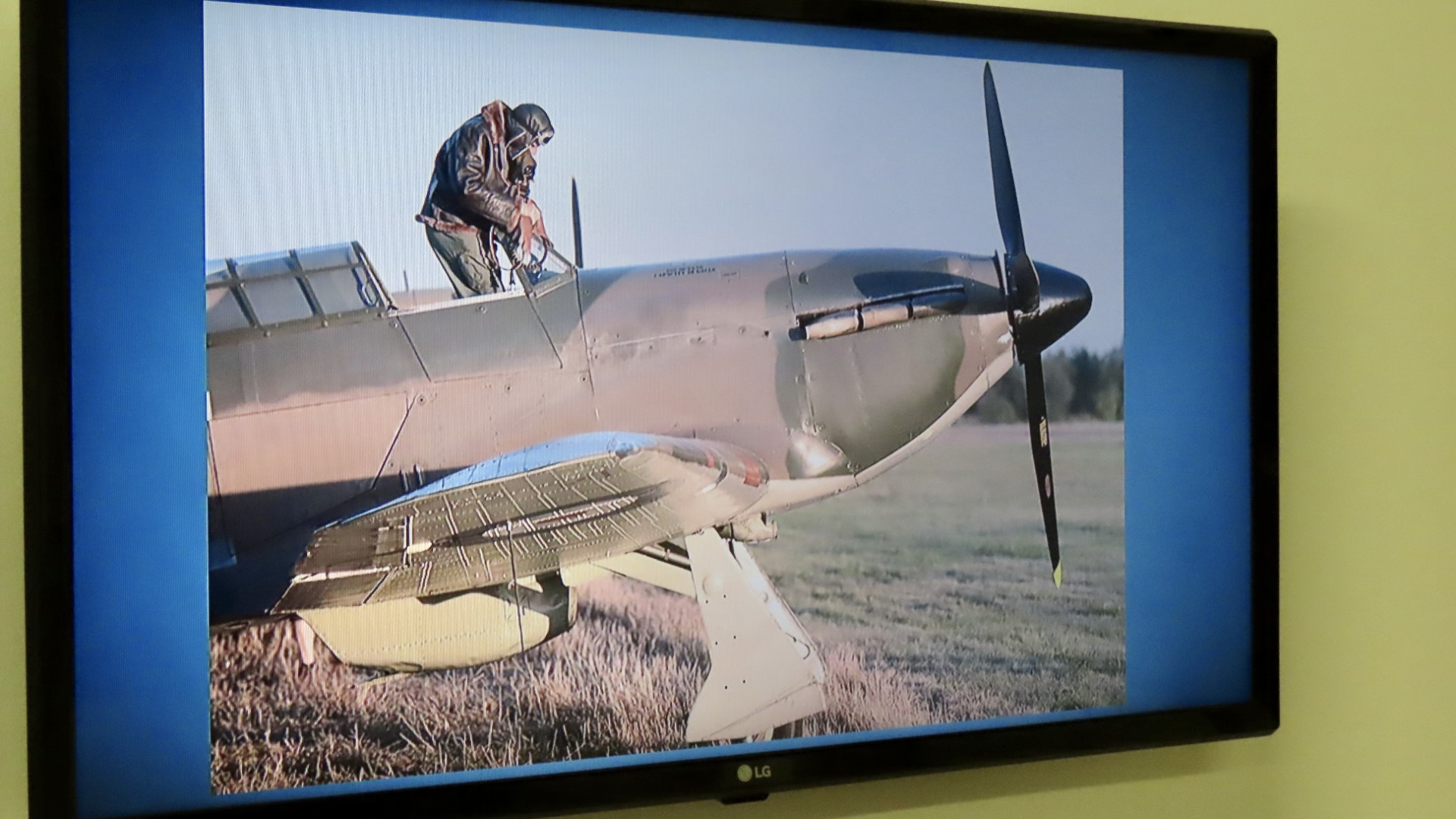
Polish air crews who fought alongside Great Britain against Nazi Germany during World War II are being celebrated in a special new exhibition at The Atkinson in Southport
Flight Lieutenant Tadeusz Chlopik was born on June 18th 1908 and served in the pre-war Polish Air Force. He escaped to England and, after converting to Hurricanes at 6 OTU, Sutton Bridge he joined the newly-formed 302 Squadron at Leconfield on August 3rd 1940.
He claimed the destruction of a Do215 on his first day with the squadron. He transferred to the Polish Air Force in Britain on August 6th.
On September 15th 1940, after sharing in destroying a Do17, Chlopik was shot down in a surprise attack by enemy aircraft over North Weald. He baled out but injured himself doing so and he fell dead at Rawreth, Wickford, Essex. He was awarded the KW and Bar.
Wing Commander Julian Kowalski was born at Nagornik, SW of Wroclaw, on 10th July 1910. He joined the Polish Air Force in 1932 and after training was posted to 121 Fighter Squadron of the 2nd Aviation Regiment. He went on 123 Squadron until September 1937 when he became an instructor at the Cadet School of Aviation.
In September 1939 the school was evacuated to Romania and he went on to France, enlisting in GC I/145 and flying the MS406.
On 9th June 1940 he shared in the destruction of a Do17.
After the French collapse he made his way to La Rochelle and sailed for England, arriving on 21st June 1940.
He went to the Polish Wing at 3 School of Technical Training Blackpool and was posted from there to 302 Squadron at Leconfield on 26th July.
Kowalski went with a 302 Squadron detachment to Duxford on 13th September to operate with the Bader Big Wing. On the 15th he probably destroyed a Do17 and damaged another and on the 19th he destroyed a Ju88. The detachment returned to Leconfield on the 25th.
He was awarded the KW and a Bar. On 4th March he damaged a Ju88. Kowalski was given command of the squadron in November 1941. He was awarded a second Bar to the KW.
On 26th April he damaged a Fw190 and on 27th July he destroyed another. Kowalski was awarded a third Bar to the KW and the VM.
On 25th August 1942 Kowalski was posted to HQ 10 Group as Polish Liaison Officer. He moved to HQ 81 Group on 11th November to do the same duties. He was awarded the DFC.
On 20th June 1943 Kowalski went to 58 OTU Grangemouth to instruct. He moved to 18 Sector HQ on 15th February 1944 and on 12th April he was given command of No. 1 Polish Wing at Northolt. He probably destroyed a Fw190 on 20th June.
Kowalski was posted to HQ 11 Group on 10th October 1944, moved to RAF Coltishall on 25th February 1945 and to Andrews Field, Essex on 8th August 1945 as OC Polish Personnel.
He was released from the Polish Air Force in January 1947 as a Wing Commander. Kowalski settled in Britain and began a career designing agricultural machinery for the company Ransomes, Sims and Jefferies.
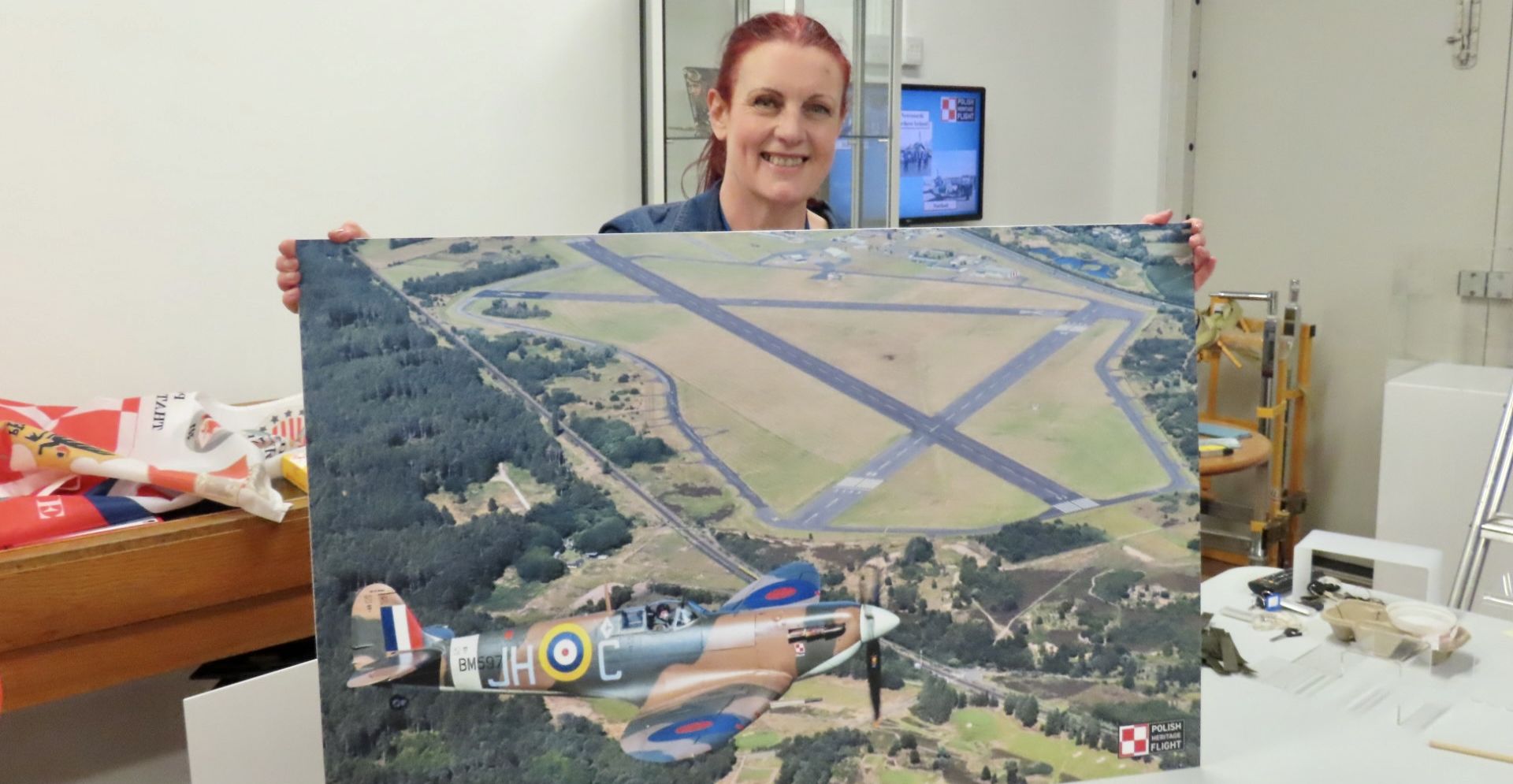
Sefton Council Heritage and Participation Officer Joanne Chamberlain at the Polish Heritage Flight exhibition at The Atkinson in Southport. Photo by Andrew Brown Media
On 11th November 2019 the Polish Heritage Flight was formed.
As part of the Historic Aircraft Collection based at the Imperial War Museum Duxford, the project aims of The Polish Heritage Flight is to bring to life the stories of the people that came to the ‘island of last hope’ to take up the fight from Britain and throughout the Second World War. Their ethos is to tell the story of all aspects of the Polish Story.
The Polish Heritage Flight flies in tribute to not only Fighter Command, but also Bomber Command, Coastal Command and all those that served in all the Services and Conflicts.
People can learn more at The Polish Heritage Flight exhibition at The Atkinson on Lord Street in Southport, which runs until Saturday 30 September 2023.
The free display honours the Polish RAF aircrew and ground crew who served at RAF Woodvale during World War Two as they fought bravely against Nazi Germany. A number of them lost their lives while there.
During World War Two RAF Woodvale near Southport was originally conceived as a fighter base for the protection of the Liverpool region.
It opened in 1941 with 308 Krakowski Squadron.
A total of 145 Polish fighter pilots served in the RAF during the Battle of Britain, making up the largest non-British contribution. By the end of the war, around 19,400 Poles were serving in the Polish Air Force in Great Britain and in the RAF.
Read More: Nostalgia: Remarkable story of Polish RAF hero who fled Nazi invasion to fight from Britain
During World War Two The Atkinson in Southport held numerous events such as concerts and an exhibition of work by Polish artists to help fund the Polish servicemen.
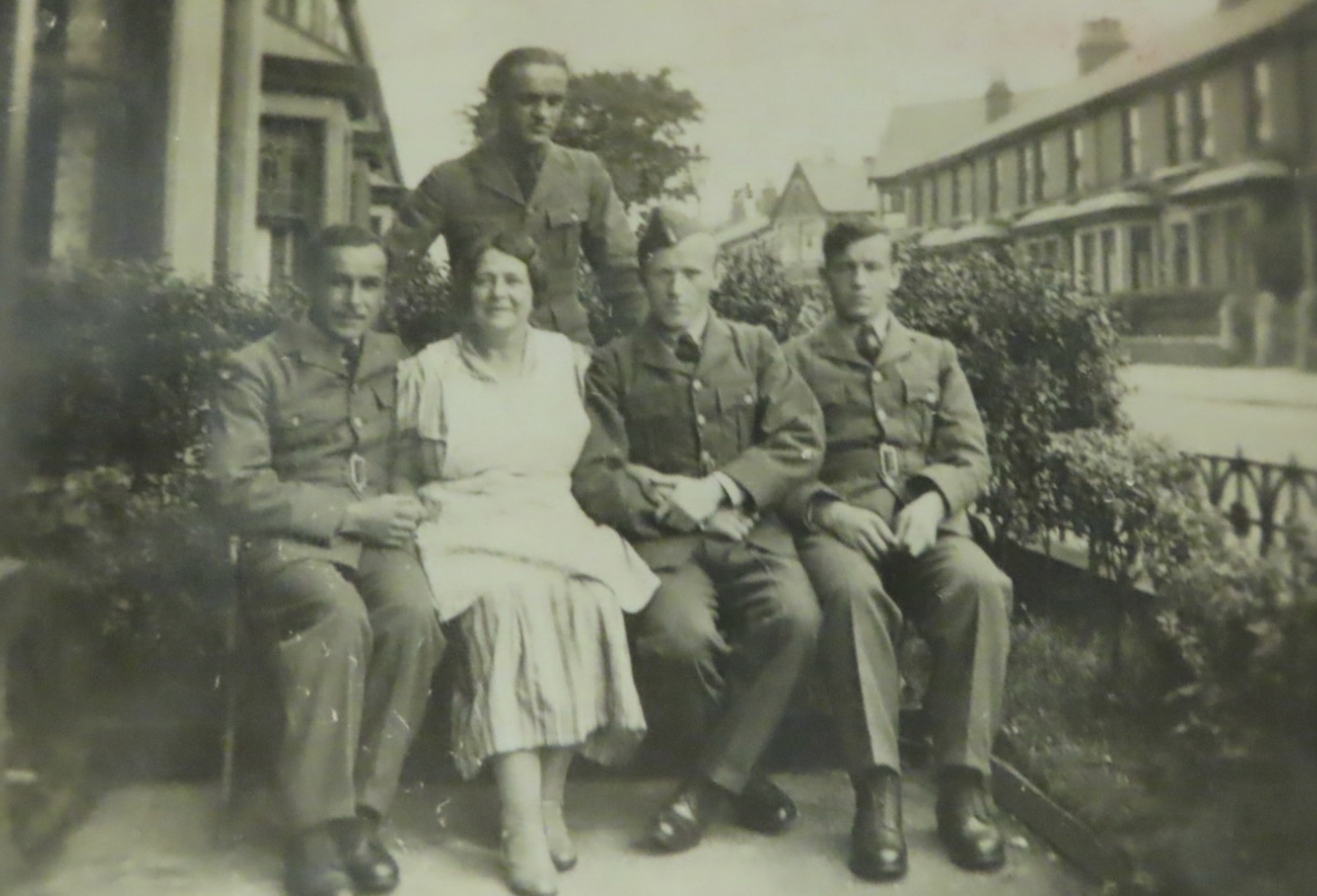
Polish air crews who fought alongside Great Britain against Nazi Germany during World War II are being celebrated in a special new exhibition at The Atkinson in Southport
A total of 22 pilots lost their lives at RAF Woodvale, including nine pilots from Polish squadrons.
Six of the Polish airmen, aged between just 22 and 28 years old, are buried in war graves at Our Lady of Compassion Church in Formby.
A well-tended war memorial in memory of members of the Polish Armed Forces who fought in the Second World War between 1939 and 1945 is situated in the War Memorial gardens on Lord Street in Southport.
Britain faced a grim struggle for survival during World War II, most notably during The Battle Of Britain, when the Luftwaffe laid siege in overwhelming numbers.
Britain survived by the skin of its teeth – in no small part thanks to the Polish fighter pilots who swelled the RAF’s numbers at such a critical time.
Commander-in-Chief of Fighter Command, Air Chief Marshal Sir Hugh Dowding, who was initially reluctant to allow Polish pilots into battle, said: “Had it not been for the magnificent work of the Polish squadrons and their unsurpassed gallantry, I hesitate to say that the outcome of battle would have been the same.”
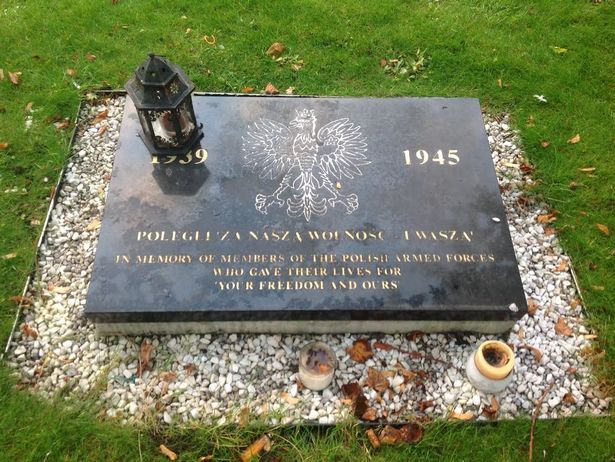
The memorial to members of the Polish armed forces who fought during Wirld War II. It is situated near the Monument on Lord Street in Southport. Photo by Andrew Brown Media
Polish airmen downed a remarkable 203 German aircraft in The Battle of Britain alone, with 35 probables and 36 damaged.
Such a feat could not be achieved without a price. Twenty nine Polish pilots lost their lives in combat during those grim days in 1940.
The vital role played by the incredibly brave Polish RAF pilots and aircrew in helping to win World War Two – and the sacrifices they made – should never be forgotten.
Do you have a story for Stand Up For Southport? Do you need advertising, PR or media support? Please message Andrew Brown via Facebook here or email me at: mediaandrewbrownn@gmail.com

